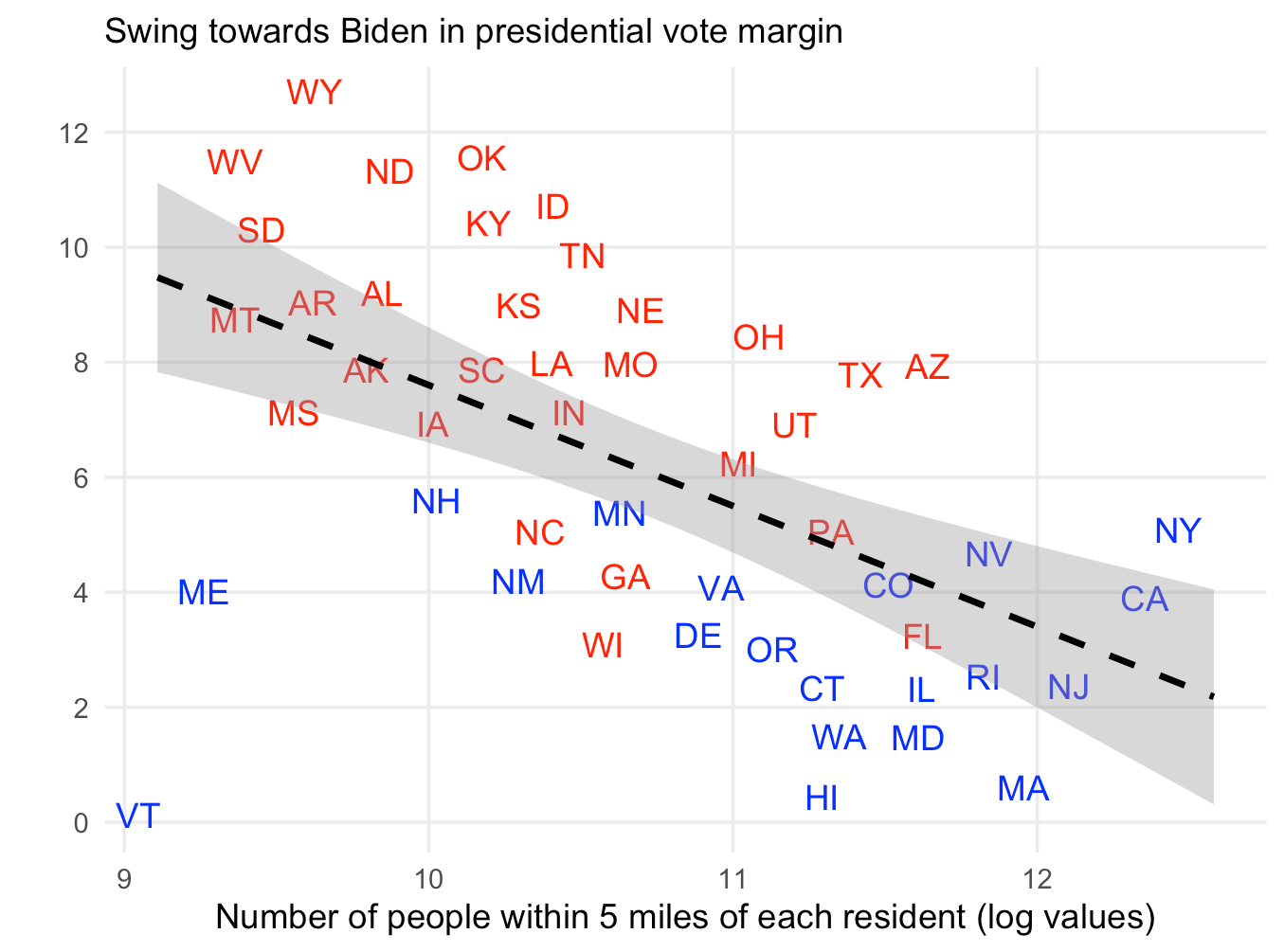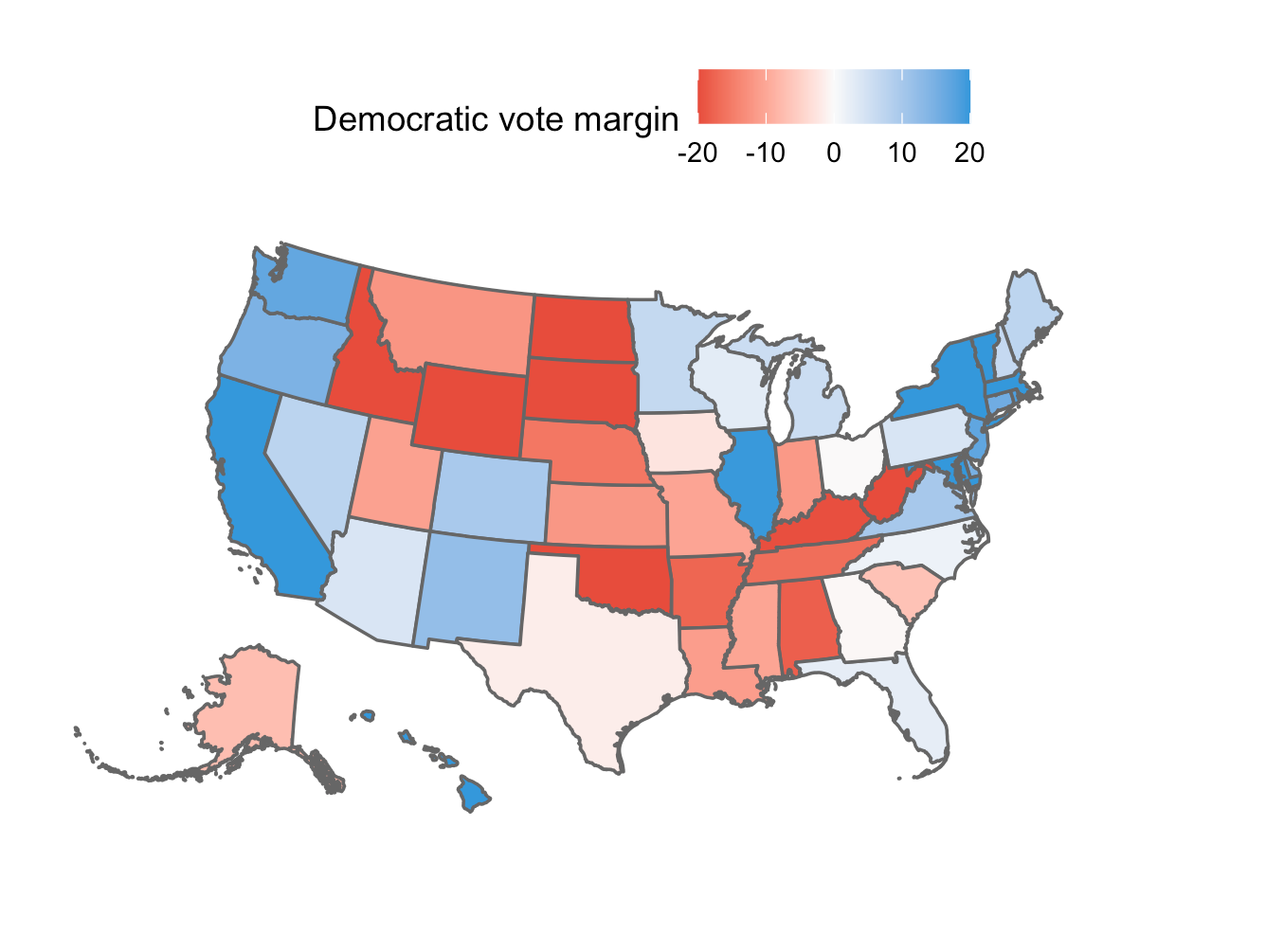Joe Biden’s strong start in rural America 📊 May 10, 2020
The former vice president is doing best versus Hillary Clinton in the heartland
Welcome! I’m G. Elliott Morris, a data journalist at The Economist and blogger of polls, elections, and political science. Happy Sunday! This is my weekly email where I write about politics using data and share links to what I’ve been reading and writing.
Thoughts? Drop me a line (or just respond to this email). Like what you’re reading? Tap the ❤️ below the title and share with your friends! If you want more content, I publish subscriber-only posts 1-2x a week.
Dear reader,
It is not lost on me that we are still many months out from the presidential election. Nor have I lost track of the pandemic sweeping across America, or that the country has entered an economic depression with unprecedented speed. And I have also not lost the self-awareness to realize that a lot of the work I do in electoral handicapping is the last thing on peoples’ minds right now. I plan to set aside some time to think and write more about that in the coming weeks.
In the meantime, I’ll still be devoting many (most?) of these weekly newsletters to discussing data on electoral politics. Even in a pandemic, I think there’s value in learning about our nation’s politics and understanding our neighbors’ political psyches.
And hey. The email is (kind of) on time this week. You night owls and west coasters can enjoy it now in the wee hours of Monday morning, and the normal folks can read when they wake up. Balance has been restored to the force.. or, erm, newsletter.
Joe Biden’s strong start in rural America
The former vice president is doing best versus Hillary Clinton in the heartland
Last week, I shared some findings with you all from a pretty simple “toy” model I coded up to look at some trends in state-level polling and compare early data on 2020 to the results from 2016. I concluded that, among competitive states, Joe Biden had made his most influential gains versus Hillary Clinton in sunbelt states, most notably Texas.
Prompted both by curiosity about the trends I was seeing in these data and that I was working on a new way to quantify how urban, suburban or rural a state is, I also matched up each state’s polling numbers with what I’m going to call an urbanicity index—specifically, the average number of people who live within 5 miles of each resident in any given state. (You may have seen this measure before, I did not create it, though I was not able to replicate some previous estimates to their precise values—a subject for future discussion, perhaps.) This scatterplot shows the delta between the swing in Joe Biden’s current projected vote margin versus Hillary Clinton’s in each state and its urbanicity:

The chart shows that Biden is doing best versus Clinton in the more rural areas, and worse (at least compared to the average shift) in more urban ones. Mathematically, this makes some sense as Biden has more votes to gain in those rural, Republican states, but there is actually a whole lot more to the story than that.
Let’s run through some hypotheses for why Biden might be outperforming in rural America:
Biden’s folksy demeanor is popular with working-class white voters. I wrote for The Economist two weeks ago about a complex model of polling micro-data that I built to split our national polls with YouGov into 51 different state-level polls. This MRP model has been showing Joe Biden doing better with working-class white voters (operationalized as those without college degrees). Since these voters are disproportionately located in rural areas, it would make sense that the more sparsely-populated states are more favorable to Biden.
But why exactly is Biden doing better with them? Here, I have no hard data, but since this is just a newsletter that won’t be copy-edited by anyone or peer reviewed in an academic publication, allow me to speculate: Joe Biden has so far centered his campaign around a coming-together for the heart and soul of America. He teases voters with a return to normalcy—one that many white people no doubt associate with their reminiscing for a long-past, whiter, Mad Men era of America where women and Hispanics weren’t threatening to take all their jobs (or so the story goes). Biden also likes to talk about his working-class roots and ties to the Pennsylvania mining community, which miners are probably going to like.
Sexist Democrats are coming home. One underrated dynamic of the 2020 primary is how strong Joe Biden ran with anti-Clinton Democrats who cast protest ballots for Bernie Sanders in 2016 but had a male moderate to vote for this time around. National polls found that latent feelings of sexism were associated with an increased likelihood to vote for Biden in the primary. It makes sense that more sexist Democrats—again, who are disproportionately located in the country’s heartland—would be likelier to come back under the Big Tent during the general.
Undecided voters lean toward the dominant party in their state. Some people have theorized that polls tend to overstate support for the less dominant party in a state when there are more undecided voters. This would sense if undecided voters followed the overall distribution of vote loyalties in a state. As the undecided vote grew, it would naturally push the two parties toward parity, understating support for the larger party. That could explain why Biden is doing better versus Clinton in red states than in blue states.
I don’t really have enough data to make a determination either way on any of these hypotheses. It’s likely that the truth lies somewhere between all of them. If Biden is outperforming Clinton with uneducated and older voters, it would make sense that latent tendencies of sexism, racism and anti-elitism would be driving the trend. On the other hand, I don’t pretend to have all the answer, so if I’ve missed something obvious I will submit to new evidence. You know how to reach me.
Finally, for what it’s worth, here’s what my little toy election model says about the state of the race today. I built it quickly for this newsletter, and as such it is pretty naive in only factoring in polls, the regression model I built for states with little or no polls and a bunch of Monte Carlo simulations):

This map is consistent with a 4-in-5 chance that Biden wins the electoral college. The simulations condition his lead in any state on the historical distribution of polling error at this point in the election cycle (a margin of error of about +/- 16 percentage points). I’ll continue to rely on this little toy model for quick findings on the race throughout the election year.
Posts for subscribers
May 9: Elites seem divided on reopening the country. The mass public? Not so much. Polls tells us that most Americans prioritize combatting the disease
What I'm Reading and Working On
I’ve become really interested recently in the distribution of economic shocks over the last 80 years, specifically on what statistical distribution they follow. It’s probably something with fat tails. How we model these shocks matters for a lot of things, including bank lending schemes and government policy—but also election models. If pandemic-induced depressions are, like, 1-in-10,000 events instead of 1-in-100,000 or 1-in-1,000,000 ones, we need to take that into account when thinking about the future.
I’m also interested in social geography and politics, so I’m revisiting Ryan Enos’s great book The Space Between Us.
Thanks for reading!
Thanks for reading. I’ll be back in your inbox next Sunday. In the meantime, follow me online or reach out via email if you’d like to engage. I’d love to hear from you!
If you want more content, I publish subscribers-only posts on Substack 1-3 times each week. Sign up today for $5/month (or $50/year) by clicking on the following button. Even if you don't want the extra posts, the funds go toward supporting the time spent writing this free, weekly letter. Your support makes this all possible!



